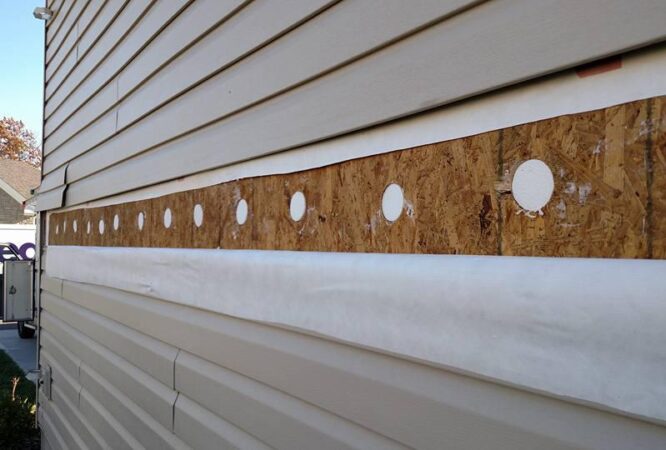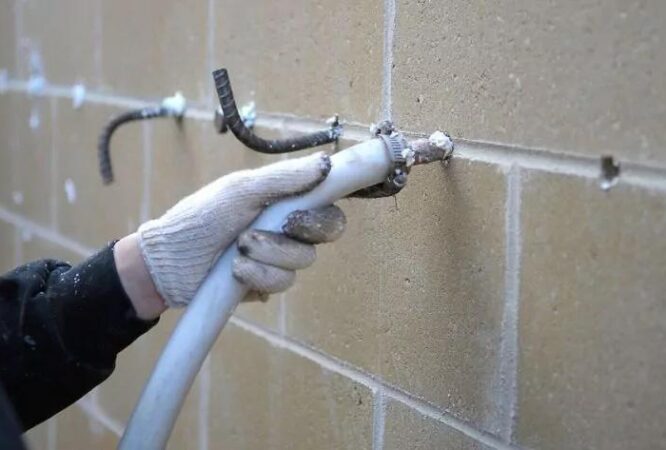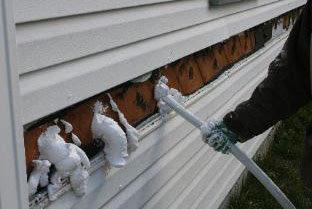Injection Foam

Injection Foam Insulation
Injection foam insulation is a high-performance insulation material that is injected into existing walls to fill cavities and create a continuous thermal barrier. Compared to other insulation techniques, injection foam is ideal for retrofit applications as it can be installed without removing drywall or other surfaces. It effectively reduces energy loss by sealing gaps, cracks, and voids within wall structures, improving both thermal efficiency and soundproofing.
It is particularly beneficial in older homes and commercial buildings where insulation needs to be added to existing walls.
R-value: Injection foam typically has an R-value of approximately R-4.0 to R-5.0 per inch, providing good thermal resistance and increasing energy savings.
Approximate Cost: The cost of injection foam insulation usually ranges from $1.00 to $2.00 per square foot, depending on the complexity of the project, wall thickness, and location.
Places for Application
- Existing Exterior Walls
- Interior Wall Cavities
- Commercial Buildings (offices, retail stores, warehouses)
- Residential Properties (walls, attics, crawlspaces)
- Hard-to-Reach or Closed Cavities
- Areas with Electrical or Plumbing Systems




Advantages
- Superior Air Sealing: Injection foam expands to fill every crack and gap, creating a complete air barrier that prevents drafts and air leakage, thereby improving overall energy efficiency.
- Enhanced Energy Efficiency: With its excellent insulation properties, injection foam significantly reduces the need for heating or cooling, leading to lower energy bills over time.
- Noise Reduction: Injection foam provides soundproofing benefits by reducing noise transmission between rooms and from outside, making it ideal for homes and offices.
- Moisture Control: The foam also acts as a moisture barrier, preventing condensation within walls that can lead to mold growth and structural damage.
- Non-Invasive Installation: Injection foam is perfect for retrofitting because it can be installed without removing drywall or other structures, making it an easy option for upgrading insulation in existing buildings.
Benefits/Results after Application
By completely sealing off gaps and cracks, injection foam helps reduce energy loss, cutting heating and cooling costs and improving the overall energy performance of the building.
The foam’s dense structure absorbs sound waves, reducing noise from outside or between rooms, improving comfort in living and working environments.
Injection foam provides a barrier against moisture, reducing the risk of mold development and maintaining a healthy indoor environment.
Since injection foam can be applied without removing walls or large sections of a building, it’s a minimally invasive solution that causes little disruption to daily operations or living.
Download Brochures
Application Process
Preparation and Inspection
Determine the areas where insulation is required and identify any existing gaps or deficiencies in the building’s structure.
Drill Injection Points
Small holes are drilled into the walls or closed cavities, providing access for foam injection.
Foam Injection
The foam is injected into the wall or cavity, expanding to fill the entire space, ensuring complete insulation coverage.
Sealing and Patching
Once the foam has expanded and hardened, the injection points are sealed and patched, texture and paint will be at the owner's/ GC’s responsibility.
Final Inspection
Ensure that the foam has fully expanded and insulated the area, providing optimal air sealing and energy efficiency.
